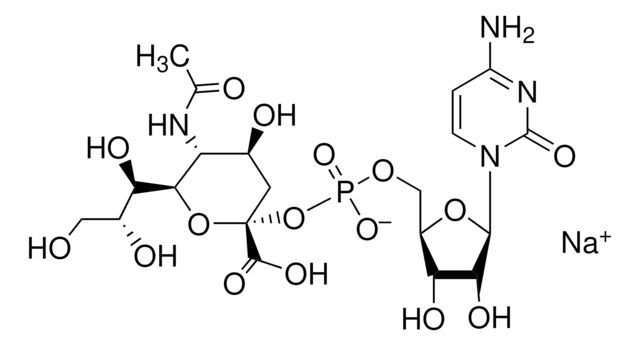D6000
2′-Deoxyadenosine 5′-diphosphate sodium salt
Synonyma:
dADP
About This Item
Doporučené produkty
biological source
synthetic (organic)
Quality Level
assay
≥95% (HPLC)
form
powder
storage temp.
−20°C
SMILES string
[Na].Nc1ncnc2n(cnc12)C3CC(O)C(COP(O)(=O)OP(O)(O)=O)O3
InChI
1S/C10H15N5O9P2.Na.H/c11-9-8-10(13-3-12-9)15(4-14-8)7-1-5(16)6(23-7)2-22-26(20,21)24-25(17,18)19;;/h3-7,16H,1-2H2,(H,20,21)(H2,11,12,13)(H2,17,18,19);;
InChI key
KZGAPWRJMWSNQO-UHFFFAOYSA-N
General description
Application
signalword
Danger
Hazard Classifications
Acute Tox. 3 Dermal - Acute Tox. 3 Inhalation - Acute Tox. 3 Oral - Eye Irrit. 2 - Skin Irrit. 2 - STOT SE 3
target_organs
Respiratory system
Storage Class
6.1C - Combustible acute toxic Cat.3 / toxic compounds or compounds which causing chronic effects
wgk_germany
WGK 3
ppe
Eyeshields, Faceshields, Gloves, type P2 (EN 143) respirator cartridges
Vyberte jednu z posledních verzí:
Osvědčení o analýze (COA)
Nevidíte správnou verzi?
Potřebujete-li konkrétní verzi, můžete vyhledat daný certifikát podle čísla dávky nebo čísla šarže.
Již tento produkt vlastníte?
Dokumenty související s produkty, které jste v minulosti zakoupili, byly za účelem usnadnění shromážděny ve vaší Knihovně dokumentů.
Zákazníci si také prohlíželi
Náš tým vědeckých pracovníků má zkušenosti ve všech oblastech výzkumu, včetně přírodních věd, materiálových věd, chemické syntézy, chromatografie, analytiky a mnoha dalších..
Obraťte se na technický servis.












